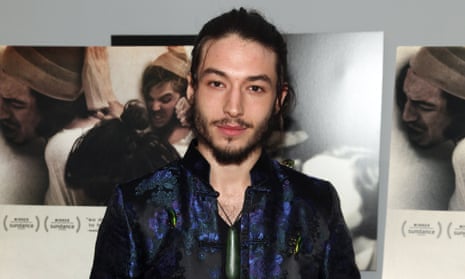The Stanford Prison Experiment is one of the summer’s more grim offerings, but that didn’t stop audiences in New York and Los Angeles from flocking to it this past weekend. Its select opening performed “better than expected”, according to Thompson on Hollywood, proving that people are still fascinated by the infamous 1971 study conducted at Stanford University that demonstrated the psychological effects of becoming a prisoner or prison guard.
The Guardian’s product and service reviews are independent and are in no way influenced by any advertiser or commercial initiative. We will earn a commission from the retailer if you buy something through an affiliate link. Learn more.
Kyle Patrick Alvarez’s drama dutifully recreates the experiment, led by psychology professor Philip G Zimbardo (played by Billy Crudup in the film), that saw 24 male students (selected from a pool of 75) randomly assigned to the roles of prisoners and guards in a mock prison situated in the basement of the Stanford psychology building. The study occurred during the summer of 1971, when school was not in session. As the film makes uncomfortably clear, what transpired over the course of the experiment was shocking, with some of the guards subjecting prisoners to psychological torture. The gruelling experience caused two students to exit the study early.
As Zimbardo said during a talk for the film hosted at the Apple Store in Soho, New York last week: “The sad conclusion [from the experiment] is humanity lost - the evil won.”
“That should be the tagline for the movie,” Alvarez joked.
As the director confirmed during the discussion, this marks the first time the actual experiment has been turned into a narrative film. Much of the dialogue from inside the mock prison, attributed to Tim Talbott’s screenplay, was lifted directly from typescripts Zimbardo made from over 12 hours of video-recorded study footage. “The movie is a faithful recreation of the essential features of the study,” Zimbardo confirmed. “I’d say 90% is right on.”
With the painstaking attention to detail came fear from Alvarez’s cast of potentially going too far down the rabbit hole to bring the Zimbardo’s experiment to the screen. As actor Ezra Miller confirmed during the panel: “There was an inherent danger that we were all aware of, in terms of simulating a simulation and maybe falling into that MC Escher painting, and probably getting stuck there. I think to Kyle’s credit, we were all vetted. I think there were some background checks.”
“We cast people who knew they had to put themselves into a place when the camera was rolling, but when they weren’t rolling, it was actually a pretty enjoyable set,” Alvarez added. “People were having a good time.”
Said Miller: “We were able to plunge deeper than we would have if we were all in our attempted actual ‘pain bodies’. We were able to jam.”
Zimbardo revealed that had the project landed in different hands, the shoot could have gone very differently. Before Alvarez came on board, another director was being considered, one whose idea it was to “create real antagonism” on and off set, according to Zimbardo. The director allegedly pitched to have the cast live in Regina, Canada, where the actors playing the prisoners were to stay at the city’s worst hotel – with the actors playing the guards sleeping in the best. “[The director] wanted them to hate each other on set,” Zimbardo said. “What he was really hoping for was to recreate some of the emotional breakdowns in the prison – in reality.”
Alvarez took the opposite approach, explaining: “I don’t have that in me. I don’t want to be confrontational. I love what actors do so much, that I want to honour that instead.”

Comments (…)
Sign in or create your Guardian account to join the discussion